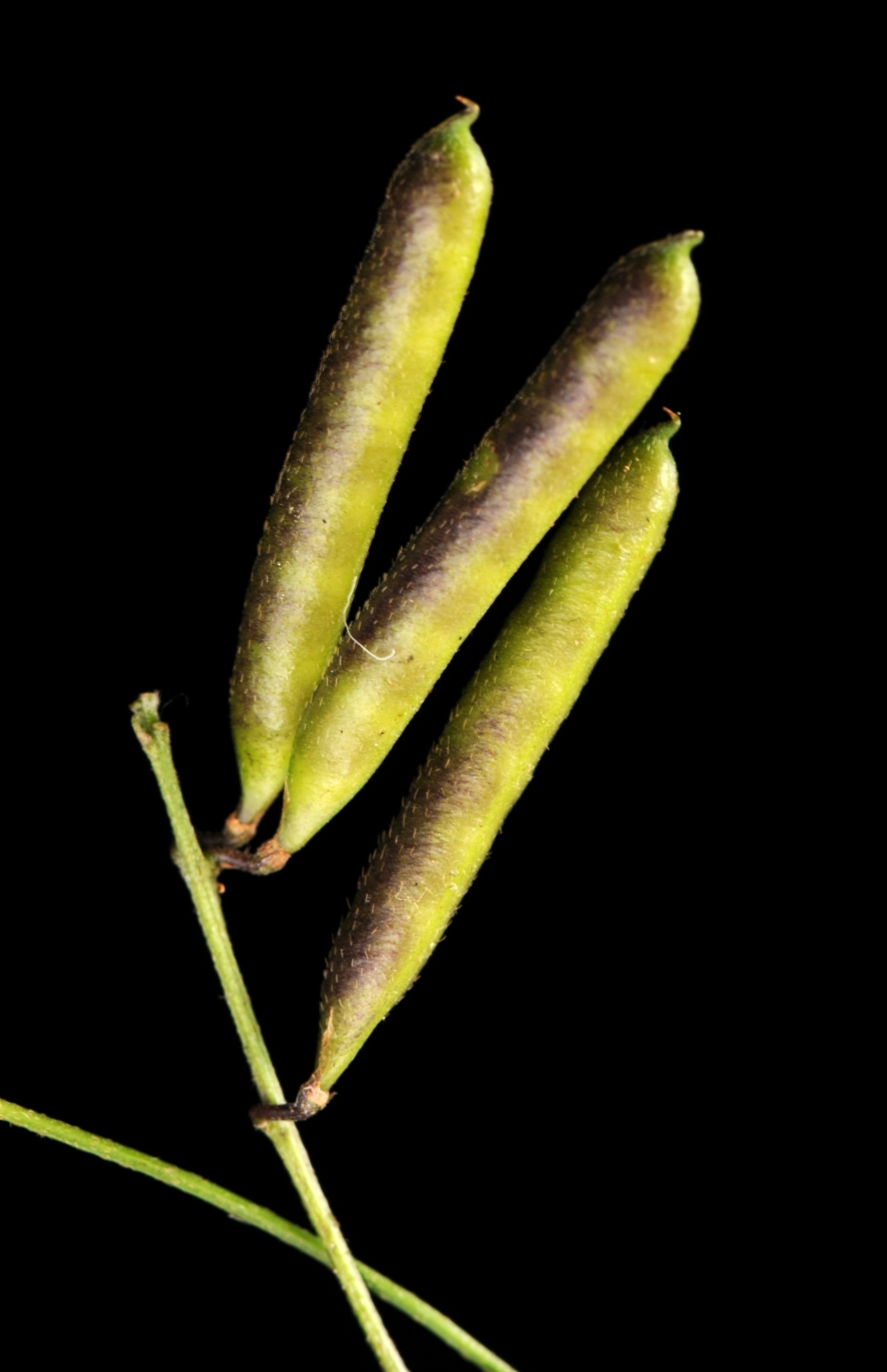Fabaceae
Trees, shrubs or herbs, sometimes climbers. Leaves mostly alternate, simple or compound with 1–many leaflets, sometimes replaced by phyllodes or cladodes, rarely absent; stipules usually present. Inflorescence various; flowers in terminal panicles or pseudoracemes, or axillary racemes, spikes or clusters; each flower on a short or long pedicel or sessile, subtended by a bract and a pair of similar bracteoles attached on, or just below, the calyx. Flowers zygomorphic or actinomorphic, usually bisexual; calyx equally or unequally toothed, often 2-lipped; corolla with 4 or 5 petals, free or variously united; stamens 5, 10 or many, free or variously joined by their filaments; anthers 2-celled, dehiscing by longitudinal slits; ovary superior, 1-celled or rarely partly 2-celled, style single, slender, tapering, stigma small, usually terminal, hairy. Fruit commonly a pod or sometimes a lomentum; seeds usually arillate.
About 750 genera with c. 20 000 species worldwide, cosmopolitan but concentrated in tropical to temperate regions; 175 genera with c. 1200 species in Australia. Many species are of commercial importance as human food crops, timber, fodder for domestic animals, horticulture etc.
The three subfamilies outlined below were commonly treated as separate families prior to molecular analyses that showed recognition of a single family with up to eight subfamilies to be more tenable.
Key to the subfamilies of Fabaceae
Subfamily Caesalpinioideae: Trees or shrubs, rarely herbs or vines. Stipules mostly small and caducous or absent, but sometimes of stout spines. Inflorescences of racemes, spikes or cymes. Flowers usually slightly zygomorphic, generally bisexual; bracteoles small or absent; sepals 5, usually free, often imbricate; petals 5, subequal, free; stamens usually 10 or fewer by reduction to staminodes, free, often dimorphic and long-exserted, anthers often opening by terminal pores. Pods usually with transverse partitions; seeds mostly exarillate.
About 150 genera with perhaps 2500 species worldwide, chiefly in tropical and subtropical regions; 22 genera and about 130 species in Australia. Gleditsia and Senna in Victoria.
Key to the genera of Caesalpinioideae
Subfamily Faboideae: Trees, shrubs, herbs or vines. Corolla papilionate, petals unequal, adaxial petal (the standard) usually largest and borne outside the 2 adjacent lateral petals (wings), the 2 abaxial petals (the keel) are innermost, usually fused and enfolding the stamens and gynoecium; stamens 10, free or variously joined by their filaments, forming a closed or open sheath around the gynoecium, anthers dehiscing by longitudinal slits. Fruit a pod or sometimes a lomentum; seeds usually arillate.
About 500 genera with c. 12 000 species worldwide; about 150 genera and 1200 species in Australia.
Subfamily Mimosoideae: Trees or shrubs. Leaves (bi)pinnate or reduced to phyllodes or sometimes, cladodes, often with glands; stipules usually present, sometimes spiny, often deciduous; small basal swelling (pulvinus) sometimes present. Inflorescences of heads or spikes of sessile flowers arranged in cymes, racemes, panicles, or solitary or paired in axils. Individual flowers small, regular, bisexual; sepals and petals 3-5, free or united; stamens conspicuous, 5, 10 or numerous, free or united basally into a tube, usually far exceeding perianth; style usually threadlike, ovules many; seeds arillate.
About 60 genera in the tropics, subtropics and warm temperate regions of the world, with c. 3000 species; in Australia, 17 genera and c. 1100 species. Acacia, Paraserianthes and Prosopis in Victoria.
Jeanes, J.A. (1996). Fabaceae. In: Walsh, N.G.; Entwisle, T.J., Flora of Victoria Vol. 3, Dicotyledons Winteraceae to Myrtaceae, pp. 663–829. Inkata Press, Melbourne.
 Spinning
Spinning

